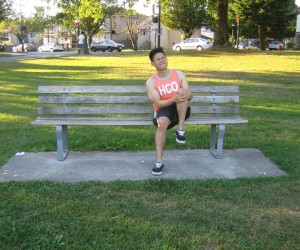Patellar tendonitis is a prevalent type of injury or inflammation of the tendon linking the kneecap to the shinbone. The pain it causes can range from mild to severe.
Any individual can end up with the condition but likely to affect athletes, especially those who engage in basketball and volleyball.
What is the precise cause?
Patellar tendonitis arises from repeated stress on the knee, usually from overuse during exercise or sports. The repetitive stress on the knee results to miniature tears in the tendon. Over time, it becomes inflamed and the tendon weakens.
Some of the contributing factors include:
- Tight leg muscles
- Obesity
- Misaligned legs, ankles and feet
- Uneven leg muscular strength
- Hard playing surfaces
An over-the-counter pain medication for brief relief to the achiness and inflammation might be given by the doctor. - Shoes with poor padding
- Chronic conditions that weaken the tendon
What are the indications?
The knee pain and tenderness are the initial signs of patellar tendonitis. It can be accompanied by swelling and burning sensation. Moving up from a squatting position or kneeling can trigger intense pain.
The discomfort might be sporadic initially, only arising after exercise or sport activity. As the damage progresses, the pain will worsen as well. It can disrupt with both physical and daily activities. A doctor must be consulted if any pain or swelling lasts more than 1-2 days.
Management of patellar tendonitis
The treatment is based on the seriousness of the injury. Some of the conservative measures that are initially used involves pain control, rest and stretching and strengthening exercises. The doctor will suggest a period of controlled rest where the individual avoids activities that places force on the knee.
Medications
An over-the-counter pain medication for brief relief to the achiness and inflammation might be given by the doctor.
In case the pain is severe, a corticosteroid shot is given in the area bordering the patellar tendon. Another approach with this option is to spread the drug over the joint along with a low electrical charge to drive it through the skin.
Therapy
The objective of physical therapy is to lessen the pain and inflammation as well as stretch and strengthen the leg and thigh muscles.
If the pain is intense while the legs are rested, the doctor might suggest using crutches or a brace to prevent further damage to the tendon.
Surgery
In case other treatment options are not effective in reducing the pain, the doctor might suggest surgical intervention to fix the tendon.


